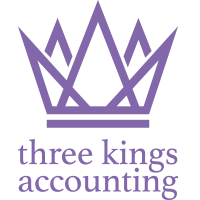How To Do A Cash Flow Forecast
Keeping the company finances in good health is one of the hardest challenges facing any business owner, and cash flow management is undoubtedly an integral feature. After all, money tied up in assets or future transactions counts for very little if it isn’t supported by having the cold hard cash to get through the foreseeable future. With this in mind, knowing how to do a cash flow forecast is one of the most significant skills you could ever learn.
What Is A Cash Flow Forecast?
Quite simply, a cashflow forecast is a business technique that allows you to estimate how much money will enter and leave your business within a given period of time. This means predicting sales, expenditure, and how much monthly cash will actively enter the company bank account.
In turn, this information can be used to provide estimated cash levels, guidance as well as help you make calculated decisions in an array of business matters ranging from whether the company can afford to launch new products or services to whether you can afford to take more money out of the business.
How To Do A Cash Flow Forecast
To create a cash flow forecast, you’ll need to create an Excel spreadsheet. Furthermore, you must understand a number of business terms before starting;
- Cash Inflow
- Cash Outflow
- Gross Profit
- Net Cash Inflow
- Net Cash Outflow
- Overheads
Many aspects of the cash flow forecast (such as duration and layout) are a personal preference. Regarding the sums, though, there are four main areas to focus on:
Sales Forecast
This is a prediction of how much money will come into the business courtesy of selling products or services. On your spreadsheet, use the first column to list each product or service on separate rows. Then use new columns to represent each month.
Simply input the projected sales figures for each product or service (including VAT) for each month before tallying up the totals. This should give you totals for each product or service as well as an overall estimate of sales income for all items together.
If this isn’t your first year, look at previous results as seasonal trends, and other factors will help you post more accurate and realistic numbers.
Secondary Cash Inflow Forecast
Product or service sales are the primary source of revenue. Still, money may enter the business through other means such as tax rebates or selling assets. List these items in a similar fashion to the products or services and use the same system to predict the inflow. Easy.
Profit & Loss Forecast
Ultimately, everything you do in business should be focused towards the end goal of making a profit. The profit and loss forecast is a vital tool for confirming that the business is destined for those intended outcomes.
To calculate the monthly gross profit, you’ll need to subtract the operating costs and overheads from the sales. Start by listing the direct cost of delivering your service/product, then be sure to factor in salaries, payroll taxes, IT costs and your overheads (e.g. travel, entertainment, rent, rates, etc) and finally any taxes.
There will be a lot of sums, but Excel can do the calculations automatically. This should give you a fair and accurate prediction.
Finalising The Forecast
The final step is to place all of these figures into a new spreadsheet, which should include all cash inflows and cash outflows. This will provide your net cash inflow or outflow. Finally, add a new row to the template that shows your opening and closing cash balance – these are the figures that will highlight exactly where your business stands.
Your Other Options
While cash flow management isn’t the only crucial ingredient in the recipe for good financial health, knowing how to do a cash flow forecast is sure to help your cause and keep your business bank balance in good stead.
However, we understand that this can be overwhelming for some small businesses and their owners. If, after reading this article, you feel you could do with some assistance in this area, please do not hesitate to give us a call on 01753 840 188 and we would be happy to help.


